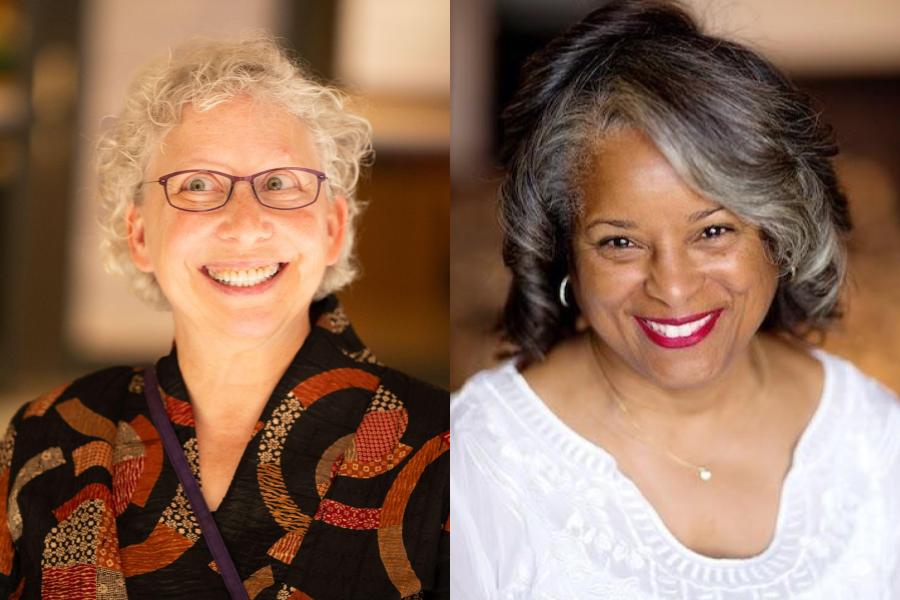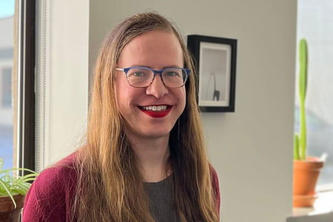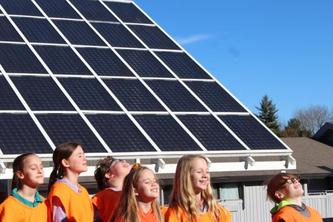
MINNEAPOLIS/ST. PAUL (05/20/2024) — Keeping kids engaged and learning over the summer can help prevent learning loss over the extended break from school.
Lisa Von Drasek, curator of the Kerlan Collection of Children's Literature, and Lesa Clarkson, professor in the College of Education and Human Development, answer questions about different strategies to keep kids engaged in reading and math over the break.
Q: How much time should kids spend reading or practicing math?
Von Drasek: There is no set time for summer reading. The most important thing is making time in our busy schedules. We are building literacy skills by reading, writing, listening and speaking. Families need to model taking time to read every day and everything counts: listening to audiobooks, reciting nursery rhymes or poetry, singing, rapping, reading aloud sports knowledge and news of the day, looking up facts about the planets, selecting and making recipes, telling elephant jokes, etc.
Clarkson: Consider consistency and the quality of the time, rather than the amount of time. We often put away formal math lessons all summer and begin thinking about refreshing those skills in August, just before school starts. Summer is a great time to see math come to life — replace formal instruction with math that makes a difference. Practicing basic skills is often thought of as dull and boring but keep reading to learn about a more interesting strategy to sharpen basic skills. Summer is the ideal time for families to engage in recognizing patterns in the world around them and demonstrate how they use mathematics in their daily lives.
Q: How can families make reading and math fun?
Von Drasek: Think about what is fun about reading for us. Is it finding out about things we didn't know? Look for the series “Scientists in the Field” and learn about how actual scientists are saving animal species or adding to our knowledge of insects like in “The Hive Detectives: Chronicle of a Honey Bee Catastrophe.” Do we want to time travel? How about a big historical novel like Adam Gidwitz's “Max in the House of Spies.” Or try a new series — I am loving Lisa Yee and Dan Santat's “The Misfits.” Does your family have a silly streak? How about “Laugh-out-loud Jokes for Kids: the Big Book of Knock-knock Jokes.” Have we been watching “Top Chef Junior?” I have been looking forward to trying the recipes in “Priya's Kitchen Adventures Cookbook for Kids: With Recipes That You (yes, You!) Can Make.”
Clarkson: One way to remain engaged in mathematical thinking and problem solving is to play games. Several card games encourage strategic thinking and cards can also be used to build fact fluency. Fact fluency is knowing that 2+3 = 5 and 7 x 3 =21. Games and puzzles can be fun ways to build skills and strategies, too. When using puzzles or games, start with “easy” levels so your children first build confidence. Increasing the difficulty level helps them learn to persist when doing difficult things. Another way to make math fun is to actually use it and include the family in those experiences. Make a budget for a trip. Include everyone in the kitchen when doubling or halving a recipe. Roll foam number cubes or dice to make more interesting fact fluency problems.
Q: What materials are useful to keep kids learning over the summer?
Von Drasek: A library card! Your local public youth librarians are geniuses in matching the right book with the right kid. Engaging, free and low-cost activities are also available at the library and community centers like parks and recreational centers. My favorite place near my home is The Raptor Center on the University of Minnesota campus where we can visit with Bubo, the great horned owl. Families could even prepare for a visit by reading “Greta the Great Horned Owl: A True Story of Rescue and Rehabilitation.” If you are looking for a comprehensive list of new titles, I highly recommend Bank Street College of Education's Best Books of the Year. This list includes more than 600 titles sorted by age group and topics. Don't forget to finish the summer at the Minnesota State Fair visiting the Alphabet Forest and Math on a Stick.
Clarkson: Families don't need special materials for summer math activities. We are surrounded by opportunities to explore mathematical concepts — we just need to help each other recognize them. For early learners, a trip on the elevator can provide the opportunity to have them recognize and count the numbers on the buttons. Asking a child to place three red apples in a bag is an ideal one-to-one correspondence lesson. For eight to twelve-year-olds, fact fluency is an essential skill we don't want them to lose.
Families can practice arithmetic facts with a regular deck of playing cards. Sums is an easy-to-play card game that is usually played in pairs. Older children can play this same game with multiplication facts. Take this to the pre-algebra level by using spades and clubs as positive numbers and hearts and diamonds as negative numbers. Face cards can be left out or be assigned a number like 11 (jacks), 12 (queens) and 13 (kings).
Q: What are the benefits of incorporating reading and math over summer break?
Von Drasek: Summer reading is a crucial step in beating the summer slide. Research from the Children's Literacy Initiative suggests students who do not read during the summer months can fall two years behind by fifth grade. It is important to provide access to reading materials for each individual. School teachers, school librarians and public librarians can provide recommendations directly and from comprehensive reading lists sorted by grade level. Beware of a short list of recommendations that promote stale "classics." Don't forget your local, independent bookstores are staffed by experts in high-interest reading.
Clarkson: We often think summer reading and math literacy take a back seat or are given no thought at all, but summer is a good “no pressure” time to help children and young adults see math in their everyday lives and the world around them. Playing board games and working on jigsaw puzzles or print and electronic games like sudoku and Number Sums helps children develop strategic thinking and cultivate tenacity.
Q: What resources does the U of M have for keeping kids engaged this summer?
Von Drasek: I am an advocate of real-life experiences as part of the reading adventure. Taking a road trip this summer? Let's read and make maps. U of M campuses across the state are abundant in experiential learning. University of Minnesota Extension can help a family start a garden, strengthening not only reading but science and math skills. I recommend Writing Boxes: The Reading/Writing Connection in Libraries for literacy-related writing activities. The recommended titles can all be found at Minnesota public libraries and the book can be downloaded for free. Ebooks Minnesota is a free service provided by Minitex, a program of the Minnesota Office of Higher Education and University Libraries, that covers a wide variety of subjects for readers of all ages.
Clarkson: Science, technology, engineering and math experiences are available at the U of M throughout the year, including summer experiences from the College of Science and Engineering, Bell Museum and Minnesota Landscape Arboretum. During the school year, middle and high school students are encouraged to participate in Prepare2Nspire. This community program provides tiered tutoring and mentoring to increase mathematics proficiency and confidence among students who need it the most.
Lisa Von Drasek is the Miranker Family Curatorial Chair of the Kerlan Collection of Children's Literature in the University of Minnesota Libraries. The Kerlan, an internationally recognized resource in the field of children’s literature, contains six core collections and several smaller collections. Von Drasek has lectured on the topics of reading/writing connection in libraries, emergent literacy, diversity in children's literature, comics and literacy, the new adult, what makes an award-winning book, and Children's Choice Awards. She also conducts community workshops on creative writing, reading aloud and selecting books for children and young adults.
Lesa Clarkson, is a professor of mathematics education in the Department of Curriculum and Instruction in the College of Education and Human Development. Her research focuses on teaching and learning mathematics in the urban classroom, specifically identifying successful strategies that increase student achievement primarily among underrepresented student groups. Dr. Clarkson developed a community-engaged research program called Prepare2Nspire to increase mathematics proficiency and confidence among students. This research is aligned with her personal and professional mission to give a voice to the urgency of preparing teachers and schools for attracting and serving all students.
About the College of Education and Human Development
The University of Minnesota College of Education and Human Development (CEHD) strives to teach, advance research and engage with the community to increase opportunities for all individuals. As the third largest college on the Twin Cities campus, CEHD research and specialties focus on a range of challenges, including: educational equity, teaching and learning innovations, children’s mental health and development, family resilience, and healthy aging. Learn more at cehd.umn.edu.
About the University of Minnesota Libraries
The University Libraries is a strategic resource of the Twin Cities campus and also provides integral information system support for the University’s four campuses in Crookston, Duluth, Morris, and Rochester. Composed of 12 library facilities with collections of more than 7.6 million volumes — and with special collections valued at nearly $1 billion — the Libraries has a history of strength in research collections and a longstanding record of contribution to resource sharing within the state and beyond. Learn more at lib.umn.edu.
About “Talking...with U of M”
“Talking...with U of M” is a resource whereby University of Minnesota faculty answer questions on current and other topics of general interest. Feel free to republish this content. If you would like to schedule an interview with the faculty member or have topics you’d like the University of Minnesota to explore for future “Talking...with U of M,” please contact University Public Relations at [email protected].
- Categories:
- Education
- Education practice and theory





